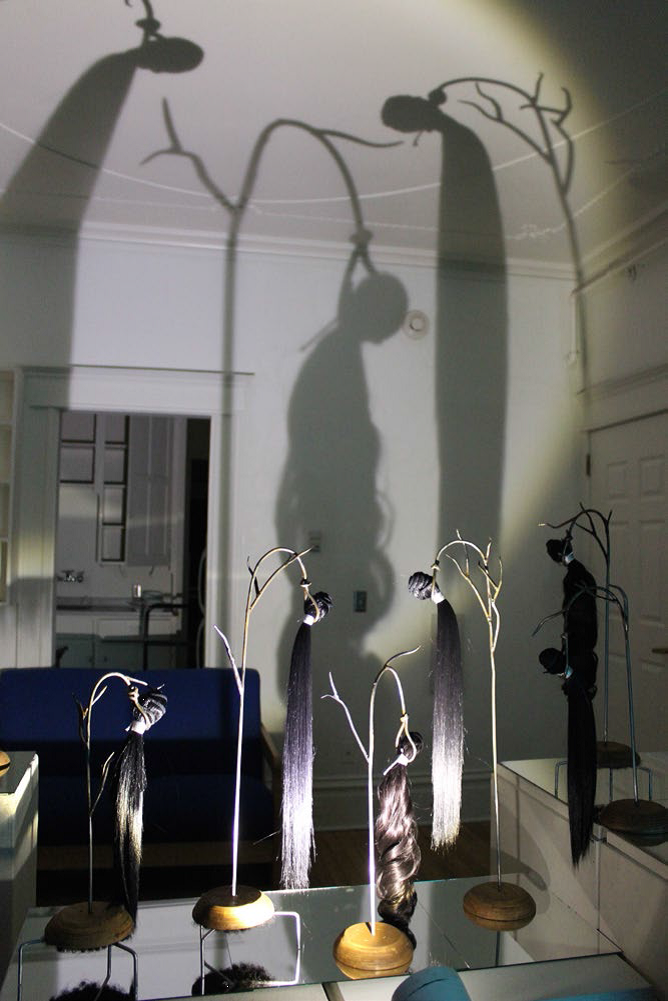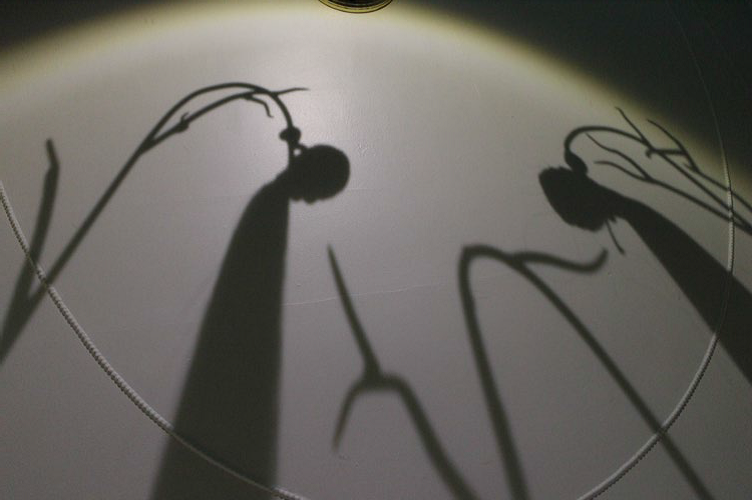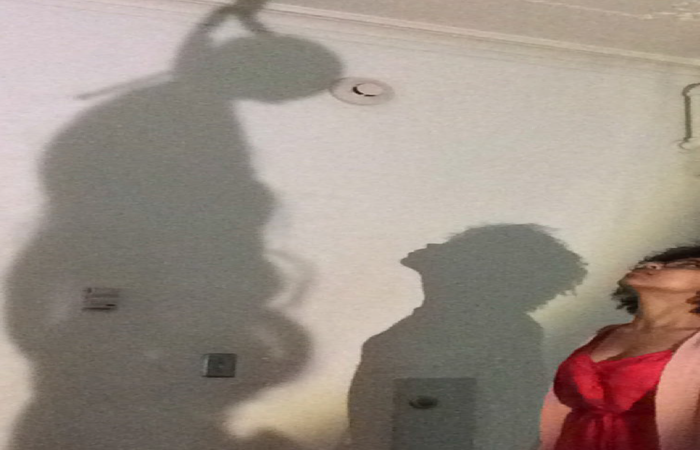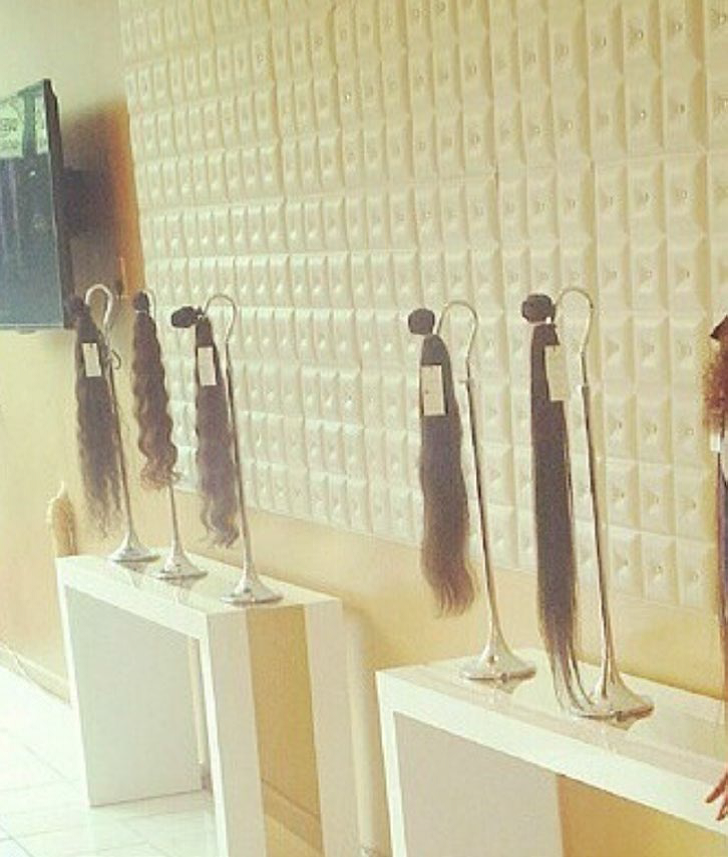
ArtsEtc Inc. 1814-6139
All works copyrighted and may not be reproduced without permission. ©2013 - hoc anno | www.artsetcbarbados.com
All works copyrighted and may not be reproduced without permission. ©2013 - hoc anno | www.artsetcbarbados.com



One young artist's social experiment links lynching, identity and the billion-dollar hair industry
Hair—lots of women see it as their crowning glory. For 23-year-old Taisha Carrington, a Caribbean girl moving to New York for college—hair became the focus of her art and the perfect disguise to run an experiment on her peers.
In Carrington’s final semester of her sophomore year at PrattMWP in Utica, New York, she presented a politically sensitive and "self-incriminating" art installation that was the climax of a two-year social experiment. Carrington went undercover to test the boundaries of racial ambiguity and identity for the sake of art.
“I knew I was moving to a new country where no one knew anything about me, so I took the chance to take on a new identity. Honestly, my hand was a little forced as well. Finding a salon which catered to my hair type would have been a challenge in the small town I was moving to.”
To be more racially ambiguous, she needed to change one feature: her hair. Carrington admits that this would have never worked in the Caribbean, where multiracial girls are extremely common and easily identifiable. On a campus full of people, from all over the world, it was likely to fly.
While undercover, Carrington assessed the effects of hair, and how this one feature altered her daily interactions. “My aim was to provoke uncensored opinions, experiences and questions which might otherwise be inhibited if I was identified as a particular race or ethnicity,” she explained.
The idea of changing hair to change identity, however, is an entire world alone, and a much larger picture. The wig-and-weave culture is a billion-dollar industry that touches almost every race and place on earth. The hair is typically sourced from religious temples in India, where it is given as a sacrifice, then journeys to Europe and China, where it is distributed to women all across the world at exorbitant prices.
“It's amazing to see how huge an industry this is, yet so much of it goes unnoticed by so many. You have to find the right groups, then it's like stepping through a door into a whole other world! A world largely understood and financially supported by coloured females. It has its own language, practices, secrets...it's down to a science, really.”
According to Carrington, her installation addresses how the rapidly growing "hair-extension/wig culture" affects the identity of many young women, including herself. A large percentage of females of African descent wear weaves for reasons such as convenience, versatility, but largely because they don’t feel as beautiful with their natural hair texture. The installation speaks about how each curly haired girl who chooses to cover her natural hair willingly "lynches" a part of her own identity.
The installation artwork mimics the way hair would be displayed in upscale boutiques to be purchased—an image Carrington always found hauntingly similar to that of a lynched human. The piece was originally installed in a small room, which allowed human-sized shadows to be cast onto the walls while the doll-sized bundles of hair stood alone in the center of the room. As the viewers walked in they became a part of the installation when their shadows interacted with those on the wall.
For Carrington, the title of the work, The Lynching of an Identity, also has a very personal meaning.
“On the date of its first installation, I ‘lynched the identity’ my peers knew by appearing among them for the first time with my natural hair exposed, thus breaking my social experiment.”
Carrington confesses it was a anxiety-building few days coming down to her big reveal. Not only was she still trying hard to stay disguised, she had to construct and install the entire instalaltion in secrecy.
“The most challenging part of the two-year experiment was keeping it hidden from my two roommates. Not only were we super-close girlfriends who shared a lot with each other, but I also had to make sure there was never one single kinky-curly strand in the shower, on my pillow…in my brush….not to mention my three-hour long hair-washing routine had to be done at the most ridiculous hours to avoid too many questions."
Along with hidden identities and a growing hair culture, the piece explores the idea of who sees what at first sight in accordance with their own experiences and familiarity with images of lynching and/or the hair-extension/ wig culture. Some may see a religious sacrifice, some may see images of lynched humans, some may see bundles of high-quality hair waiting to be worn glamorously.
Carrington continues to develop artwork that expresses her hyperawareness of her interactions with others based on physical appearance. The Lynching of an Identity is the first piece in a series.
Taisha Carrington's work is as much about her questioning her thoughts and self as it is an experiment with media, techniques and unexpected materials. Themes of communication, identity and Western standards of beauty dictate much of her work to date and are present in the pieces below.
She has spent time capturing the importance of the female to humankind and how the female is viewed in modern society, but also how she believes she is viewed. Her works express a hyperawareness of her interactions with others based on her physical appearance and how this promotes feelings ranging from confidence or dominance to angst and uneasiness. In essence, they explore her battle with femininity and expectations of being a modern-day "beauty" (as a former Miss Barbados World) while growing as a female artist and entrepreneur.
Carrington has a vast inventory of mental images, experiences and other tidbits she has gathered, which she pulls from to create her work. She is not always sure of her imagery influences, as sometimes they are so old in her memory the contextual information disappears, but the basic image, phrase or idea remains. This part of the process allows her to build new ideas from old memories.
With an eye and deep love for detail, much of her work encourages the viewer to come closer, to look, feel, interact with, and simply experience. She values this relationship developed at that moment between her work and the viewer. It is this intimacy and relationship that she always considers and encourages in all her works, whether they are small, large, two-dimensional, three-dimensional, or even installations.
Carrington won the Barbados at 50 Monument Design Competition, launched in February 2016. The country's newest national monument is to be unveiled at The Garrison Savannah November 29, 2016.


